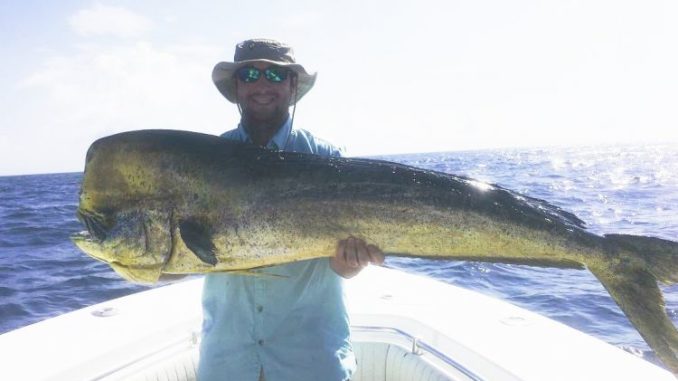
Plus, some red snapper fishing tips
Summer is in full swing, and that means rip lines and red snapper.
If tuna isn’t your thing, finding a well-defined rip line can be your key to finding mahi-mahi, wahoo and other pelagic species. And if you have larger live bait like hardtails or blackfin, you could even catch a blue marlin.
A rip line is a well defined line of grass, trash, etc. that acts as a nursery for many baby fish and baitfish. It is also a distinct dividing line between green and clear blue water, and marks a noticeable temperature change with warmer water on the blue side.
Rip lines tend to fluctuate day to day, so if you can find someone at the docks who has fished one recently, you may be able to get some idea on how far out it can be found. Twenty to 30 miles would not be uncommon. There also are apps like RipCharts and Hilton’s that you can subscribe to for finding rip lines.
If you find a rip, slow troll 5 to 7 knots with artificials on the blue side, and watch for grass on your line. With live bait stay slower — 3 to 5 knots — or you’ll drown your bait.
You can bait with dead ballyhoo, rigged to swim like live bait, or troll subsurface treble hook shaky baits like a Russelure or Rapala. Color choice is not critical, but thinking about what wahoo and mahi are feeding on may help you decide.
Mahi-mahi can be a bit crazy once they’re in the boat, so watch for hooks. You won’t need to gaff small chicken dolphin, but be careful when gaffing larger fish as they tend to flail near the boat.
June produced many jumbo red snapper in excess of 20 pounds, but don’t be surprised to see slightly smaller averages as they become more heavily fished. There are still tons of fish on structures and rigs within state waters. Live pogies hooked in the chin and out through the nose work well, but dead bait also will produce.
A 16-ounce weight is a good average size, but taper or add more weight depending on the strength of the current. Also, the depth you’re fishing will determine how far to drop, but a good average is a third to halfway down for vertical structure. And you don’t need to set your hook — let the fish eat, then steadily reel up as you feel it eat.
A quick tip for inshore anglers this time of year as we head into our hottest months — throw an Arctic Ice ice pack or two into your closed-circulation livewell: This will give your live shrimp or croakers a little longer lifespan.